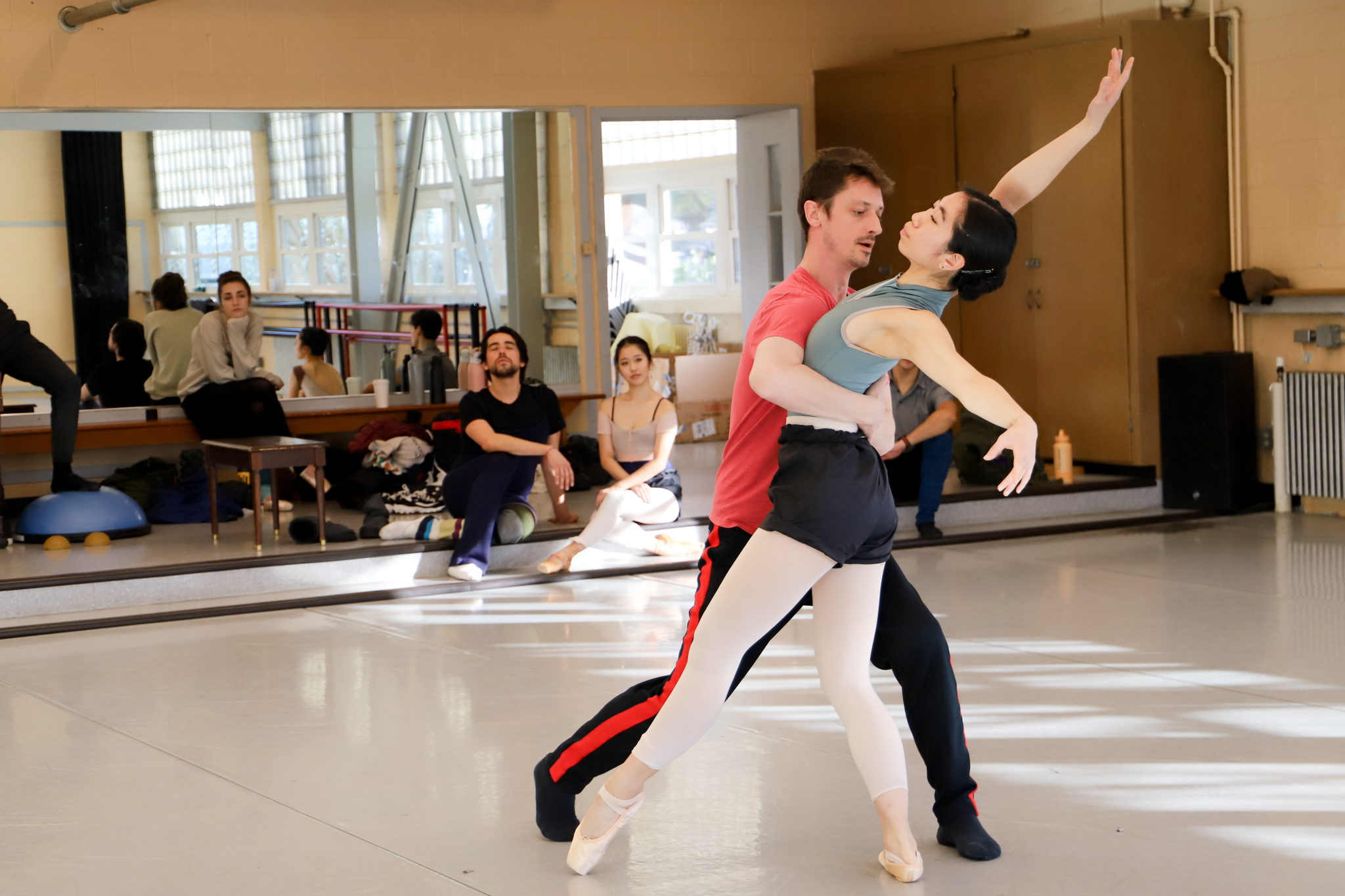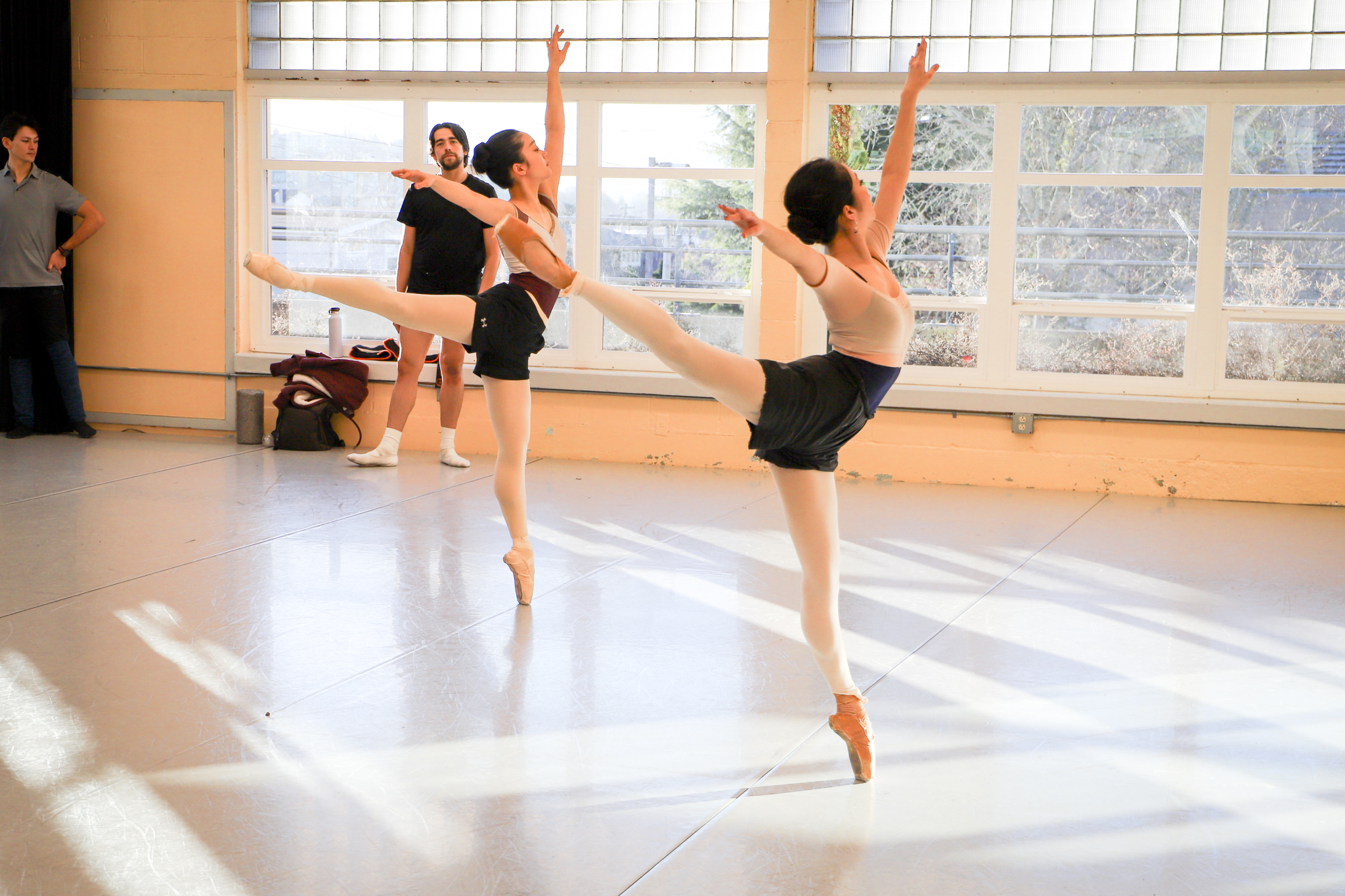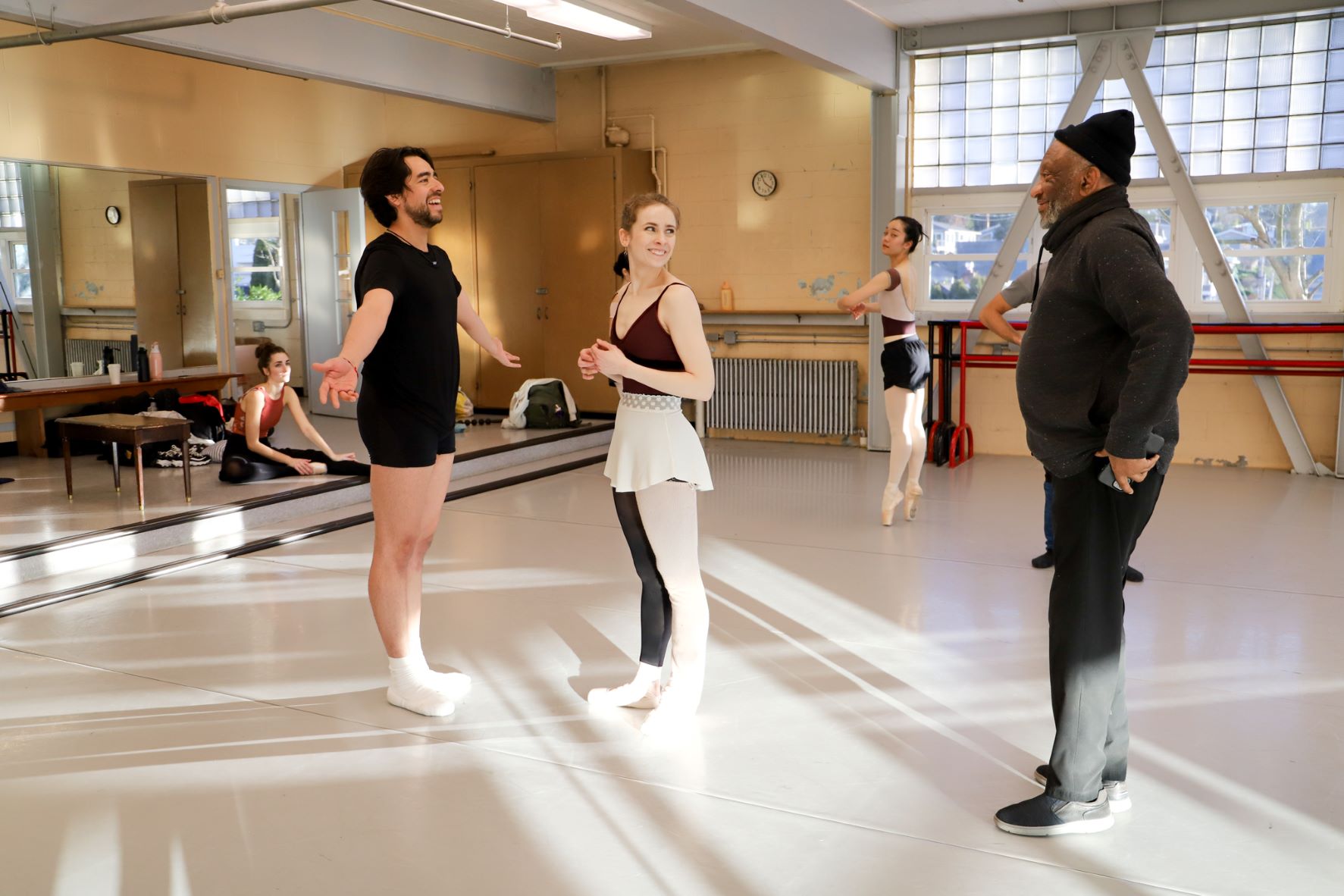A prolific choreographer for over 40 years, Donald Byrd is Byrd has frequently been referred to as a “citizen artist,” a descriptive that aligns with his personal beliefs that dance as an art form is a social/civic instrument. His new work will be premiered as part of OBT’s 2023 production of Debuts. Go behind the scenes of Donald Byrd’s creative process in this blog.
What is “From the Dark Land” about?
In some ways, it’s about nothing, but then it’s also about a lot of things. It’s evocative. In a way, it’s about the music. And the music, “Black Angels, 13 Images from the Dark Land” for electric string quartet by the contemporary composer George Crumb, is challenging to listen to – it’s harsh.
So, one of the things I was after in this work was this idea, “How do you take music that is challenging for the listener – especially for a dance audience that is used to music that is easy to listen to – and help them understand what that music is through the dance?”
Crumb’s music feels chaotic and from a dark place. I think when Crumb wrote his music, he was talking about the Vietnam War. And so, the idea of the darkness that was there, but also there’s also chaos and death, and that there is really no explanation for that. The theme running through Crumb’s piece is a quote from Schubert’s string quartet, “Death and the Maiden.” In Schubert’s original piece, death presents itself as being something that’s soothing. Death says to the Maiden, “Don’t be afraid of me.” So, the piece that I’ve created has a lot of evocative imagery in it. Sometimes, it can feel really abstract, and then other times it can feel emotionally very specific.
 Taylor Lim & Sergey Kheylik
Taylor Lim & Sergey Kheylik
So, your inspiration for the piece came from the music?
Yes, the music was there first. I thought it was interesting to work with but it’s not long enough for the full choreographic work. So I went to the original music that Crumb was quoting and used the second movement from Schubert’s string quartet for the second part of the piece. And that’s where the imagery of 19th-century Romanticism came from – you know, the Romantics were kind of infatuated with death.
So, this piece turned into a search. How do I connect this violent-sounding music, with its quote from a 19th-century string quartet, and then the 19th-century string quartet itself, and make it all work together as a theatrical dance experience?
 Ria Adachi & OBT dancers
Ria Adachi & OBT dancers
What do you want the audience to take away from this piece?
I want the audience to be engaged by it. And “engagement” can mean a lot of things. You can be alienated and still engaged. The dissonance of this piece and this music and the fact that the movement does not have any obvious beauty about it, is alienating. And so, you can be like “I hate this,” but in fact, it still has captured your attention. I’m interested in the contradictory ways that we can respond to things. It’s not always about, “I liked it” or “that was pretty.” Because sometimes the things that grab us might be the things that cause us discomfort.
 Sergey Kheylik & OBT dancers
Sergey Kheylik & OBT dancers
And so the audience might be grappling with their ill-at-ease and asking “why does this make me feel uncomfortable? It’s just a bunch of people skipping around on the stage. Why am I feeling all of this? What does that mean? What does it say about me?” Because it actually says more about the viewer than it says about the work itself.
My relationship with the audience, in some ways, is about provoking them. So, my work can provoke a sense of compassion and feelings, or it can provoke a sense of being alienated and distanced. But it’s engaging. I’m going to provoke you for a dialogue, you know, like a real “meaty conversation.”
I think by nature there’s an aspect of me that’s astringent. I think I’m a nice guy, but I can also be a little abrasive sometimes, especially around the creative process. It’s probably part of my creative strategy to be abrasive in order to bring things out in people – and not out of a sense of being cruel. But if we are always sitting in a place of comfort, we don’t look really deeply at who we are, and what we think is important.
Why is creative work so important to you?
I like challenges, and I am an impatient person. And so, the process has an urgency about it because I’m impatient. I don’t want to wait. And when I am creating work, I don’t compromise. And that’s part of the challenge. You know, that’s just like life. You have these struggles in your life and you figure out how to get through them. You don’t let the challenges and struggles of life stop you. You just kind of figure out how to keep going and do what you have to do.
And the work will show it forever. Sometimes dancers don’t know how magnificent they can be. They focus on all the stuff they can’t do, like “I don’t look like this. This isn’t right. That’s not good.” But sometimes they need to be nudged a little bit for the best possibilities of who they might be, not just as dancers, but as artists. And so, a lot of times my pushing and prodding is about trying to get them to recognize that in themselves.
 Ria Adachi & Jacqueline Uwamura
Ria Adachi & Jacqueline Uwamura
So, do you like pushing yourself like you push the dancers?
I do. Otherwise, there’s no reason to get up in the morning, you know, I’ll just stay in bed. I have to have a reason for being, those three hours in the studio. But the creative process is painful. Debuts is an invitation to set up some challenges for me and not to engage in a lazy way. I have never been one of those people that took the easy route. I wish I were that kind of person. But I don’t know what the easy way is. You know, one dancer at Spectrum Dance Theater said to me, “Why does everything you do have to be so hard?” Because.
The difficulty in creating a new work is what I love.
 Donald Byrd with Alberto Gaspar & Taylor Lim
Donald Byrd with Alberto Gaspar & Taylor Lim
Donald Byrd is the Artistic Director of Spectrum Dance Theater in Seattle. Formerly, he was Artistic Director of Donald Byrd/The Group, a critically acclaimed contemporary dance company, founded in Los Angeles and later based in New York, that toured both nationally and internationally. He is a Tony-nominated (The Color Purple) and Bessie Award-winning (The Minstrel Show) choreographer. Throughout the 40+ years of his choreographic career, Mr. Byrd has created over 100 works for his companies as well as works for many leading classical and contemporary companies. This list includes Alvin Ailey American Dance Theater, Pacific Northwest Ballet, Dayton Contemporary Dance Company, The Joffrey Ballet, The Philadelphia Dance Company (Philadanco), Dance Theater of Harlem, and many others. He has worked extensively in theater and opera, both in America and abroad, including Seattle Opera, San Francisco Opera, The Israeli Opera, New York City Opera, The New York Shakespeare Festival/Public Theater, Intiman Theatre, and Baltimore Center Stage. Mr. Byrd’s many awards, prizes, and fellowships include the Doris Duke Artist Award; Honorary Doctorate of Fine Arts, Cornish College of the Arts; Masters of Choreography Award, The Kennedy Center; Fellow at The American Academy of Jerusalem; James Baldwin Fellow of United States Artists; Resident Fellow of The Rockefeller Foundation Bellagio Center; Fellow at the Institute on the Arts and Civic Dialogue, Harvard University; and the Mayor’s Arts Award for his sustained contributions to the City of Seattle.
Photos by Katya Turnbow

